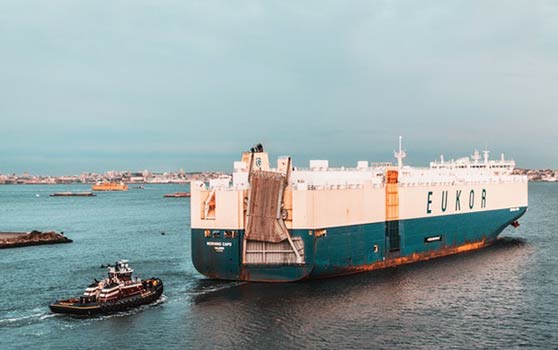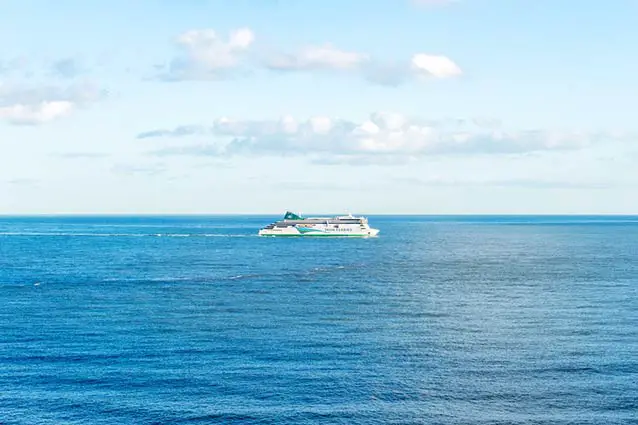Most boaters enjoy getting as much speed as they can out of their vessels, so it can be a real pain when your boat is underperforming. Sometimes an underpowered boat can even become downright dangerous.
I experienced the dangers of sailing an underpowered boat a few years back when I was hired to deliver a small vessel from Panama to French Polynesia. I was excited to make the journey, but what I didn’t know at the time was that I was about to sail through the worst El Nino event in recorded history.
A few days out of Panama, the wind died, and it didn’t return for three weeks. Without a functional engine and no wind in sight, I was forced to drift until the ocean currents finally pushed me past the doldrums and the blessed trade winds finally returned. I later learned that many vessels were forced to motor for over a thousand miles to finally reach the wind.
We drifted for so long that barnacles grew all over the underside of the hull, and even when the wind did return, our speed was significantly reduced by the extra drag no matter how much sail area I hoisted. On my attempts to scrape the barnacles off the underside of the hull, I was driven back into the boat by prowling sharks.
By the time I arrived at the Marquesas Islands 62 days after my departure, my food supplies had run dangerously low. As you can clearly see, an underpowered boat can quickly turn dangerous in the open sea.
Contents
When is a Vessel Underpowered?
Each vessel is designed to sail differently, and the approved maximum speed varies significantly between different yachts. Most boats fall into one of three categories – displacement vessels, planning boats, and foiling boats.
Displacement vessels are usually heavy in relation to their length and can only safely move through the water up to their hull speed. When a displacement boat exceeds its hull speed, the helmsman can easily lose control and the boat may tend to broach on the side of a wave.
Planing boats are lighter in weight, and their hulls are designed to rise up out of the water through hydrodynamic lift once their speed exceeds the designated hull speed. Foiling boats are even lighter yet, and they are designed to lift up off the water at high speeds and “fly” above the water, supported only by a small foil that extends below the hull.
A vessel is considered underpowered when it is not moving through the water at the appropriate speed in relation to the designated hull speed, hull shape, sail area, sea conditions, wind speed, and engine horsepower.
What Are Some of the Causes for Being Underpowered?
There are many potential causes for a boat to become underpowered, depending on the type of vessel. Here are a few of the many reasons that it could happen to your boat:
- On sailing vessels, a common reason for being underpowered is having a rig that is too small for the boat, or not carrying enough sail area in relation to the wind speed and direction at the time.
- On motor vessels, the most common reason for being underpowered is some kind of issue with the engine or prop.
- Sometimes being underpowered is simply a matter of not using as much horsepower as your vessel was designed to require.
- Another common reason for being underpowered is having a prop that is too large or too small for the vessel.
- If the underside of the hull has not been regularly cleaned and has developed growth of barnacles or other marine life, this can slow the vessel and cause it to be underpowered.
- Often a boat becomes underpowered when the rudder, keel, or prop snags some kind of debris, like kelp, a fishing net, or other garbage. The added drag slows the vessel and may cause it to be underpowered, despite putting up more sail area or cranking up the RPMs on the engine.
What Are the Issues With an Underpowered Boat?
If your vessel is underpowered, this could cause a variety of issues, depending on the cause. Below we will explore some of the main problems caused by an underpowered boat:
- Slower passage time. An underpowered yacht will take longer to get where it’s going, whether that’s across the bay or across the ocean. On a long offshore passage, sailing an underpowered vessel can add weeks to the total passage time.
- It’s less fun! Nobody wants to sail on a slow and boring boat, and it’s bad for the crew morale when it feels like you are getting nowhere, despite your best efforts.
- It can be dangerous in some situations. Sometimes, speed means safety, like when you are trying to get to port before a storm hits or if you are timing your passage to transit a pass at slack water.
- You can get stuck in a breaking wave. Many famous sailors like Bernard Moitessier and Vito Dumas, preferred to sail fast through storms rather than slow the vessel down. This allowed the vessel to slip past a breaking wave before it broke rather than suffering a direct hit. An underpowered vessel may be unable to escape, which puts everyone’s life at risk.
- An underpowered yacht is a lot less comfortable at sea. Anyone who has logged some serious sea miles knows that there is nothing worse than being stuck on a slow boat that rolls with every wave or swells. A fast boat often has a much-improved motion through the water, making for a more comfortable ride.
- It may be a sign of mechanical failure. With motor vessels, the most common cause of being underpowered is an issue with the engine or prop. If you notice your motorboat is underpowered, you will want to carefully check over the entire engine as soon as possible before the problem gets worse.
How Can You Avoid Sailing Your Vessel Underpowered?

Clearly, sailing your vessel underpowered is often a very bad thing. But what can you do to avoid it? In this section, we will list some of the main things you can do to prevent your vessel from becoming underpowered at the wrong time:
- Install a feathering prop that is the right size for your vessel.
- Keep the undersides of the vessel clean of barnacles and marine growth at all times (Remember to haul out and clean the vessel at least every other year or more often).
- Use the appropriate amount of sail area for the wind strength and wave conditions at the time.
- Keep the engine and the prop in good condition at all times. Immediately handle any issues as they arise rather than waiting for total failure.
- Keep a close eye out for garbage or other debris that could foul your keel, rudder, or prop. If you do happen to snag something, stop the boat and detach the debris as soon as possible.
Is Sailing Your Boat Underpowered Ever a Good Thing?
It’s never fun to sail your boat below its potential, but in some circumstances, it can be the best course of action. As unpleasant as it can be to sail your vessel underpowered, having too much power can potentially be an even greater issue.
For example, if you are caught in a storm with too much sail area up, you could risk suffering from a variety of disastrous situations. One common result of sailing an overpowered vessel is that the vessel may surf as it passes over the top of a wave, causing it to broach and potentially get knocked down with the mast hitting the water. In extreme cases, the boat may even capsize completely or even roll 360 degrees.
Another disaster that can be experienced on an overpowered boat is pitchpoling. This is caused when the boat sails too fast down the front of a wave and the bow digs into the water in the trough. The boat then flips the stern over the bow and usually the mast is lost. The deck and cabin top may also be damaged and if the structural integrity of the vessel is destroyed the boat may sink.
Even if the boat fails to be knocked down or pitchpoled, you may still lose the mast if you have too much sail area up in a storm. In these conditions, it’s a good idea to reef down the sails, or even sail under bare poles until conditions subside.
Another case when it’s a good idea to underpower your yacht is if there are any signs of engine trouble, but you are forced to keep the motor on to make it to a safe port. In this case, it’s a good idea to keep the RPMs to a minimum until you are able to identify and fix the problem or get the boat safely to the dock.
Recommended reading: Navionics Web App – GPS Navigation app for sailors
Summary
Sailing a vessel underpowered is never fun. An underpowered yacht can be a sign of engine trouble, poor sail design, or too much growth on the underside of the hull, among other potential issues.
If you notice that your boat tends to sail underpowered, it’s important to take the time to identify the problem and take action before things get worse.
Fortunately, there are a number of steps that you can take to avoid your vessel from sailing underpowered and maximize your fun and safety on the water.







